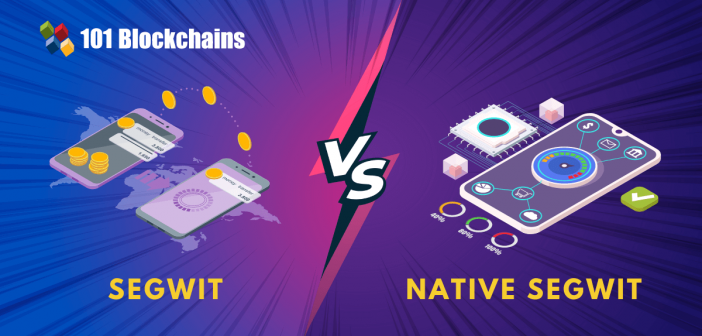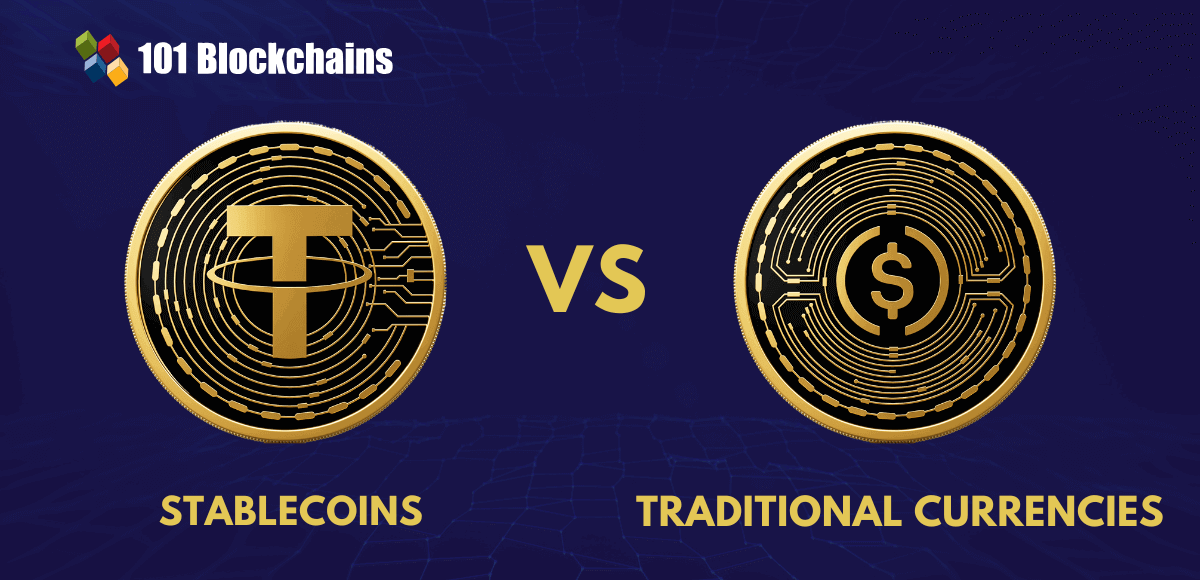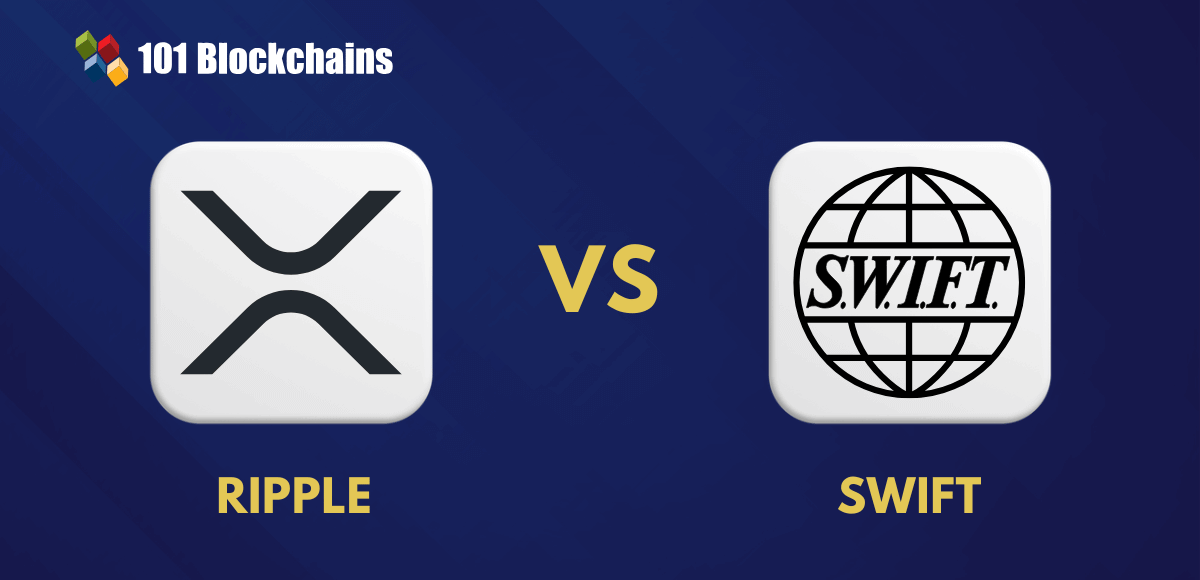Learn how blockchain truly works, master key definitions, and uncover what makes smart contracts so "smart." Dive into the fundamentals, gain valuable insights, and start your blockchain journey today!

- Comparisons
Diego Geroni
- on November 26, 2021
Know the Difference between SegWit and Native SegWit (Bech32)
The world has become familiar with cryptocurrencies to a great extent than it was a decade ago. Since its inception in 2009, Bitcoin has fostered a whole new ecosystem with various cryptocurrencies and new forms of assets. Therefore, cryptocurrency transactions have also escalated profoundly in recent times, especially with the growing stages of cryptocurrency adoption.
As a result, beginners in the world of crypto often try to learn about the different elements in cryptocurrency transactions, such as Bitcoin addresses. The discussions on SegWit vs. Native SegWit comparison have been drawing attention towards Bitcoin addresses. Let us find out more about SegWit and its successor in the following discussion.
Want to become a Cryptocurrency expert? Enroll Now in Cryptocurrency Fundamentals Course
Bitcoin Address Formats
If you want to understand the native SegWit vs. SegWit debate clearly, then you should start with an understanding of Bitcoin addresses. You might be wondering about the reasons to do so in a discussion on native SegWit and its predecessor. As a matter of fact, both of them are Bitcoin addresses.
If you want to use Bitcoin for making payments in daily transactions, then you should identify where you are sending and receiving payments. In the case of Bitcoin, the place where you send or receive cryptocurrency is available online in the form of a string of distinct numbers and letters. The string of numbers and letters is a Bitcoin address.
You can think of the SegWit as a Bitcoin address that serves as the destination or source for Bitcoin payments. Just like sending money to a bank account, you would need an address for sending Bitcoin to an individual. The receiver or the sender could attach the address with their wallet to complete the transaction.
You can create a Bitcoin address by downloading a Bitcoin wallet which helps users in sending, receiving, and storing Bitcoins. In addition, the Bitcoin wallet would also keep a record of your private keys. Today, you can find three distinct types of Bitcoin addresses in the market such as Legacy, SegWit, and the Native SegWit.
Develop comprehensive knowledge about the working of Bitcoin blockchain by Enrolling in the Getting Started with Bitcoin Technology Course.
Reasons for Introducing SegWit and Native SegWit
Before diving deeper into the SegWit vs. Native SegWit comparison, it is important to reflect on how they were developed. In the initial days of Bitcoin, users could access only one specific type of address, known as Legacy or P2PKH addresses. As time passed, the debate pertaining to the block size of Bitcoin started to gain prominence somewhere around 2016 and 2017.
The primary reason for the debates was focused on the fact that Bitcoin supported a maximum block size of 1 MB for each block. Therefore, the block size restricted the number of transactions that could be added at a specific time. Over the course of time, the weight of all the accumulated transactions can lead to network congestion. Subsequently, the network congestion could lead to longer processing times alongside delays in terms of hours.
The problem of network congestion is one of the formidable reasons for which you are trying to seek insights into the native SegWit vs. SegWit debate. They are Bitcoin addresses that emerged for resolving the issues of network congestion due to the block size of Bitcoin. The Bitcoin community presented solutions focused on taking a specific share of the transactions and deploying them on an external layer. As a result, the load on the main chain would reduce. The portion of transactions taken in this process is the witness data and also known as SegWit or segregated witness.
What is SegWit?
Your understanding of the SegWit vs. native SegWit comparison would depend considerably on the identification of the individual entrants. For any specific transaction on a blockchain network, the digital signatures account for almost 65% of the total space. SegWit provides an innovative approach for reducing the consumption of space by overlooking the data associated with a signature. On the contrary, it transfers the signature from input towards a structure at the end of the transaction. As a result, it can help in increasing the 1 MB limit for block size to almost 4 MB.
The proposal for SegWit gained formidable momentum due to the setbacks associated with Legacy addresses. Initially proposed as SegWit2X, SegWit was implemented as a soft fork in August 2017 and became a new standard effortlessly. The basic focus of SegWit was pointed towards making transactions lighter in terms of size.
As a result, they can ensure the accommodation of multiple transactions in one Bitcoin block. Subsequently, it can enable improved scalability and transaction settlement speed alongside reducing the transaction fees for all Bitcoin transactions. Furthermore, SegWit has also played a crucial role in the development of second-layer scaling solutions.
Build your identity as a certified blockchain expert with 101 Blockchains’ Blockchain Certifications designed to provide enhanced career prospects.
What is Native SegWit?
The next important point of attention for you in a native SegWit vs. SegWit comparison would refer to a description of the other player. In simple words, you can consider native SegWit as the upgraded version of segregated witness. It is the latest stage in the evolution of address formats and presents stark deviation from its predecessors. Most important of all, native SegWit can provide the assurance of better weight efficiency in comparison to the earlier address formats.
Difference between SegWit and Native SegWit
After a clear overview of SegWit and native SegWit, it is important to arrive at the primary agenda of this discussion. In order to compare both types of Bitcoin address formats, you need to take different factors into consideration. Here are some of the notable highlights you can discover in a SegWit vs. native SegWit comparison.
-
Format
The foremost aspect to differentiate the two entries in native SegWit vs. SegWit comparisons is their format.
In the case of the SegWit address, you can notice that it starts with the number 3 and leverages a P2SH script function. In addition, the format could also enable non-native segregated witness transactions by leveraging the P2WPKH-in-P2SH cryptographic standard.
On the other hand, a native SegWit address is also referred to as the Bech32 address, which presents formidable differences from P2 styles. The format of the native segregated witness addresses starts with bc1.
Get familiar with the terms related to cryptocurrency with Cryptocurrency Flashcards.
-
Wallet Support
Another notable aspect for resolving the SegWit vs. native SegWit debate would refer to wallet support. Interestingly, you would find that both the concerned Bitcoin address formats support sending and receiving Bitcoins among one another. On the other hand, it is also important to check whether the wallet provider supports all types of address formats.
-
Transaction Costs
The most crucial differentiator in the native SegWit vs. SegWit battle would obviously bring transaction costs into the equation. Transactions featuring a SegWit address could definitely prove better than those with legacy addresses. However, transaction costs with native SegWit tend to be lower as it wins the race clearly with bigger block size and lower fees in comparison to other address formats.
Learn about how cryptocurrencies work, and the significance of crypto in the changing finance industry with AN INTRODUCTION TO CRYPTOCURRENCY FUNDAMENTALS Ebook
-
Efficiency
Another notable factor for SegWit vs. native SegWit comparison would point towards the scope for efficiency. The first player in the comparison, segregated witness address formats, provide better efficiency than legacy formats. Segregated witness addresses involve the separation of signature associated with the transaction from the transaction data. As a result, SegWit address users would pay lower fees in comparison to Legacy addresses.
In addition, the transactions with segregated witness addresses are comparatively faster with an improved capacity of all blocks. With segregated witness addresses, blocks could store more transactions in comparison to legacy address formats. On the other hand, native SegWit presents formidable improvements in block size, thereby providing better efficiency than its predecessor.
-
Security
The separation of signatures from transaction data with SegWit provides a clear opportunity for improved security. With an isolated signature, hackers would find it difficult to tamper with the transaction signatures. Native SegWit presents an obvious improvement over its predecessor in terms of security with a new address format.
Which One is the Best?
The comparison of SegWit vs. native SegWit clearly implies that the latter is a winner on different terms. While the segregated witness is a promising address format in comparison to the legacy formats, the native SegWit address format has promising improvements. You can have faster transaction speed alongside a reduction in fees for each transaction.
On top of it, you can also have the advantage of improved scalability with the Bech32 address format. Furthermore, the successor of the SegWit address format also provides improved prospects for error detection. At the same time, you could also identify the facility of better readability by making all the addresses in lowercase.
Start learning Blockchain with World’s first Blockchain Career Paths with quality resources tailored by industry experts Now!
Final Words
On a final note, one could clearly notice that native SegWit is a promising improvement over its predecessor. The comparison of two renowned Bitcoin address formats with a detailed understanding of their significance offers an effective platform for differentiating them. The SegWit vs. native SegWit debate shows they have evolved as solutions for setbacks associated with legacy address formats.
Both the new types of address formats help in expanding block size alongside accommodating more transactions in one block. At the same time, both of them help in reducing the transaction fees, albeit in varying proportions. Explore more about Bitcoin address formats and how they can influence the crypto world.
*Disclaimer: The article should not be taken as, and is not intended to provide any investment advice. Claims made in this article do not constitute investment advice and should not be taken as such. 101 Blockchains shall not be responsible for any loss sustained by any person who relies on this article. Do your own research!






